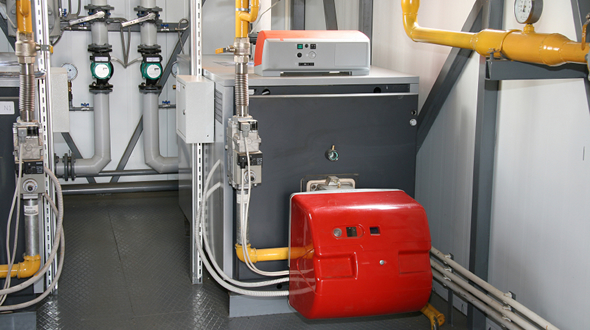
Boiler installation and repair
Hydronic Boilers
Simply put, boilers use hot water and radiators to keep your house heated in the winter months by circulating heated water or fluid through a piping system that travels to all rooms of the structure. The fluid is in an enclosed system and circulated throughout by means of a motorized pump. Hydronic systems are gaining popularity among new construction projects in North America for several reasons. Firstly, hydronic boilers are more efficient and more economical than forced-air systems (although initial installation can be more expensive due to the cost of materials.) Secondly, they also provide more consistent temperatures than forced-air systems. The copper baseboard pipes hold and release heat over a longer period of time than air does, so the furnace does not have to switch off and on as often. This is due to the fact that copper heats mostly through conduction and radiation, whereas forced-air heats mostly through forced convection. Lastly, hydronic boilers do not introduce any dust, allergens, mold, or combustion byproducts into the living space.
Comfort and Durability
High Efficiency
A condensing boiler is a hot water heating device designed to recover energy normally discharged to the atmosphere through the flue. When a condensing boiler is working at peak efficiency, the water vapour produced by the burning of gas or oil in the boiler condenses back into liquid water – hence the name “condensing boiler”. These boilers can operate at an AFUE rating of 92%-98% efficiency giving homeowners exceptional value for their money.
Condensing boilers are now largely replacing earlier, “conventional” designs in powering domestic central heating systems in North America. The extra cost of installation and equipment for condensing boilers could be recovered through lower fuel use in a 2-5 year period. Condensing boilers can serve more than one use in today’s homes, because they are so efficient they can be used to provide other heating applications at the same time while heating your home. Installing a separate hot water heater is not necessary if you choose to use an indirect fired domestic hot water tank. So even if you’re not ready to change your hot water tank system at the same time as you boiler, you will always have the option of doing it later since the option is built into many of the models available.
State-of-the-art Equipment
Low Efficiency
Much like a mid efficiency furnace these boilers still use an aspiring burner and draft inducing fan to draw the flue gases threw the heat exchanger. These types of boilers tend to operate in the 80% efficiency range and can be an alternative when replacing standard or conventional efficiency boiler systems. These models remove more heat from combustion gases so that less heat escapes when the gases are exhausted and efficiency is improved. Depending on the circumstances, they might be vented through a wall or through a chimney.
